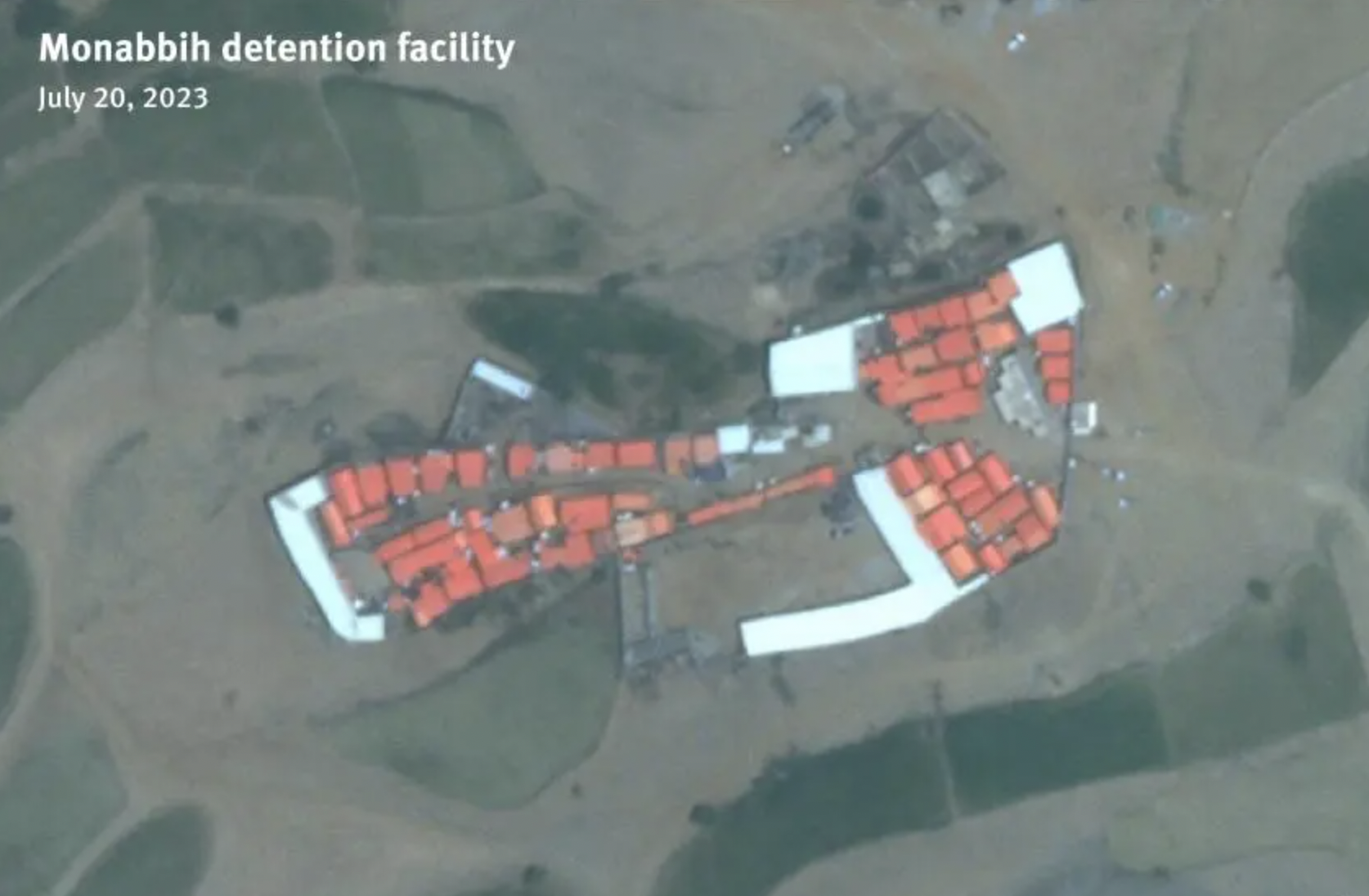
In a new report, Human Rights Watch (HRW) details the horrific killing of hundreds of migrants and asylum seekers at the Saudi-Yemen border. According to the report, Saudi border guards have used explosive weapons and shot at groups of people–largely Ethiopian migrants and asylum seekers–killing hundreds, amongst them women and children. Those who survive have been detained in overcrowded and inhuman conditions.
Detention at the Border
According to the report, migrants and asylum seekers attempting to cross the Yemeni-Saudi border are kept in various forms of ad hoc detention on the Yemeni side by smugglers. Some – mainly Tigrayans – are confined at a site in Monabbih (Saada Governorate). Those who cannot pay for the onward journey reportedly remain locked up. Those who can pay are moved to Al Raqw (also in Saada Governorate), an informal migrant camp from where smugglers lead them to the border.
Others – mainly ethnic Oromo – are held at the Al Thabit camp (Saada Governorate) which has been described as akin to an open-air camp surrounded by barbed wire. Reportedly, once migrants are in the facility, they are only permitted to leave if they pay smugglers to take them to the border. If they are unable to pay, they are taken to detention facilities in Saada. (For an account of the other forms of ad hoc immigration detention by non-state actors, see M. Flynn, “Kidnapped, Trafficked, Detained: The Implications of Non-state Actor Involvement in Immigration Detention,” JMHS, 2017.)
Attacked, Detained, and Expelled
According to testimonies collected by HRW, groups of migrants and asylum seekers attempting to cross into Saudi Arabia from Al Thabit and Al Raqw have faced explosive weapon attacks and shooting at close range–with survivors commonly facing detention in Saudi detention facilities.
Many attempt the crossing in large groups. According to one survivor interviewed by HRW, from his group of approximately 170 people, 90 people were killed during their attempt to traverse the border. Others have described being apprehended by armed border guards and asked which limb they would prefer to be shot. According to HRW, “hundreds” of largely Ethiopian migrants have been killed in attacks like these since the start of the year.
Other abuses committed by border guards which are detailed in the report include beating survivors following the use of explosive weapons; forcing survivors to rape other survivors; and detaining survivors in a variety of settings before expelling them back to Yemen. Detention reportedly lasts from several hours to several days, and settings are overcrowded and wholly inadequate for human residence. Detention facilities have included military camps, farms, and more formal detention centres like the Al-Dayer facility in Jizan.
Describing the Al-Dayer centre, one migrant said: “We could not sit and sleep. We had to stand. The toilet was overflowing and the floor was wet with human excrement. The wetness of the floor … it came above our ankles. We were walking in toilet water. We developed infections from this. People were sick. It was a disaster.”
For years, Saudi detention centres have been plagued with reports of appalling conditions. Similar conditions–including blocked and overflowing toilets, lack of beds and blankets, overcrowding, and no medical care–were reported at the Al Dayer centre by HRW in 2020, as highlighted by the GDP at the time. In 2022, Amnesty International also reported on the “inhuman and cruel conditions” in the country’s detention facilities.
Context: The Eastern Route
For years, Ethiopian migrants and asylum seekers have attempted to reach Saudi Arabia via what is known as the “Eastern route”–from the Horn of Africa, across the Gulf of Aden, through Yemen, and into Saudi Arabia. The vast majority of those attempting this journey are Ethiopian, but other nationalities are also amongst those making the journey.
According to a May 2023 International Organisation for Migration situation report, “The Horn of Africa and Yemen is one of the busiest and riskiest migration corridors in the world travelled by hundreds of thousands of migrants, the majority of whom travel in an irregular manner, often relying on smugglers to facilitate movement along the Eastern Route.”
Concerning migrants seeking to transit Yemen en route to Saudi Arabia, the situation report highlights detention and other human rights abuses at the border: “Due to reports of human rights violations and detention at the border with Saudi Arabia, a new migration trend was noticed whereby migrants were arriving in the Hadramaut and Al Mahrah governorates with the intention of accessing economic opportunities in Oman. These areas have fewer military checkpoints, relative stability and good acceptance of migrants by the host community. Furthermore, the Yemeni Coast Guard is less present in the coastal areas leading to Mukalla, Hadramaut, rendering it a preferred transit point. As of March 2023, over 5,200 migrants were estimated to be present in the Al Mahrah governate, located along the Omani border. However, health and social services are limited in this area and migrants continue to face physical and human rights violations, which has tipped the vulnerability scale to alarming levels. In addition, due to strict immigration laws in Oman, migrants are reportedly being forcibly returned from Oman.”


